 |
 |
 |
 |
 |
 |
 |
 |
 |
 |
|
KICP Workshops & Events
|
KICP Lectures, Talks, & Events, 2014 Adler After Dark: Bradford Benson, "Unveiling the Dark Universe with the South Pole Telescope" February 20, 2014 | 6:45 PM | Adler Planetarium 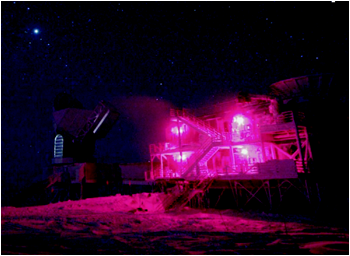 Related Links: KICP Members: Bradford A. Benson Scientific projects: South Pole Telescope (SPT) Physics colloquium: Juan Collar, "Present status of direct searches for dark matter" March 6, 2014 | 4:15 PM | KPTC 106 I will review the most recent developments in the field of direct searches for dark matter, recently centered around the elusive WIMP (Weakly Interacting Massive Particle), concentrating on local activities. The difficulties involved in interpreting the results from the many searches in this active area will be discussed. I will present some personal opinions about the immediate future of the field. Mi Galaxia es Su Galaxia - My Galaxy is Your Galaxy March 8, 2014 | Adler Planetarium Website Meet Carlos Wagner, Alvaro Chavarria, and Claudio Ugalde & enjoy astronomy shows, activities, and talks in Spanish. On Saturday, March 8, the Adler Planetarium, in partnership with Latino organizations and Chicago-area institutions, will host Mi Galaxia es Su Galaxia to welcome Spanish-speaking families for a celebration of the universal world of science. Mi Galaxia es Su Galaxia is a one-day event designed to encourage Latino families to experience science together in their own language. Participants will enjoy a range of scientific experiences presented in Spanish including sky shows, lectures and demonstrations. A diverse group of renowned Latino scientists and local volunteers will be on hand to conduct experiments, lead interactive activities and answer questions throughout the day. "Mi Galaxia es Su Galaxia will celebrate the exploration our Universe in ways that go beyond borders and language barriers," said Michelle B. Larson Ph.D., president & CEO of the Adler Planetarium. "The Adler is honored to host an international group of renowned Latino scientists, passionate volunteers and local families for a celebration of science." Mi Galaxia es Su Galaxia will feature special programming and presentations including: Shows Mi Galaxia es Su Galaxia will offer families the opportunity to view some of the Adler's most immersive shows in Spanish. The Adler's Grainger Sky Theater will transform into a virtual observatory in Cosmic Wonder as photographer, visual artist and Adler Astronomer Jose Francisco Salgado narrates the Adler's blockbuster sky show in Spanish. The Definiti Space Theater will feature One World, One Sky: Big Bird's Adventure. This planetarium show follows Sesame Street's Elmo, Big Bird, and their friend, Hu Hu Zhu, as they explore the night sky. In the 3-D show, Exploding Stars and the Shape of Our Galaxy, audiences will investigate the Milky Way Galaxy and the Pinwheel Supernova. There will be a Q & A with astrophysicist Claudio Ugalde immediately following this show, which will be presented in the Samuel C. Johnson Family Star Theater. Lectures Mi Galaxia es Su Galaxia will welcome a renowned group of scientists who will engage one-onone with Adler visitors. Physicist and professor Juan Carlos Campuzano will describe what superconductors are, how they are made and how they impact our lives. Mexican astrophysicist and professor, Claudio Ugalde, will explore the explosive science of supernovas and how thermonuclear reactions operate in the Universe. Roberto Castillo Ladron de Guevara, lead engineer for the Observatory in Cerro Paranal, Chile, will chat live via Skype from the Very Large Telescope (VLT) to discuss how the placement of observatories in Chile by the European Southern Observatory (ESO) is helping to revolutionize astronomical techniques. Event Partners For this event the Adler has partnered with Chicago-area institutions including The Field Museum, the University of Chicago, Northwestern University and the University of Illinois at Chicago. Other event partners include Casa Mexico-USA, Aeromexico, Direccion General de Divulgacion de la Ciencia, Evanston Public Library, European Chocolate, Rosa's Horchata, the Mexican Tourism Board and Taco Veloz. "Mi Galaxia es Su Galaxia is a grassroots community effort led by the Adler Planetarium and made possible by the tireless efforts of Latino community members and supporters," said Isabel Carrera, Casa Mexico-USA, Education programs director. "This event is the first of many efforts across numerous institutions that will address the current needs of the Latino community." Read more >> Related Links: KICP Members: Alvaro Chavarria; Claudio Ugalde; Carlos E. M. Wagner Statistics Colloquium: Josh Frieman, Fermilab and the University of Chicago, "Probing Cosmic Acceleration with the Dark Energy Survey: Statistical Challenges and Big Data in Cosmology" March 10, 2014 | 4:00 PM | Eckhart 133, 5734 S. University Avenue The Nobel Prize in Physics for 2011 was awarded for the discovery that the expansion of the Universe is accelerating. Yet the physical origin of cosmic acceleration remains a mystery. The Dark Energy Survey (DES) aims to address the questions: why is the expansion speeding up? Is cosmic acceleration due to dark energy or does it require a modification of Einstein's General Relativity? DES is addressing these questions by carrying out a cosmological survey of 200 million galaxies over 1/8th of the sky using a new, 570-megapixel, digital camera on a 4-meter telescope in Chile over the next several years. I will overview the DES project, which achieved 'first light' in September 2012 and which just finished its first survey season last month, and present some early results. In the process, I will discuss some of the "Big Data" challenges in processing and analyzing the data and highlight a number of the statistical methods being employed to extract useful cosmological information (machine learning, spatial N-point clustering statistics, cluster-finding algorithms, Bayesian classification, MCMC, etc). Related Links: KICP Members: Joshua A. Frieman Scientific projects: Dark Energy Survey (DES) BICEP2 extravaganza March 19, 2014 | 2:00 PM | KPTC 106 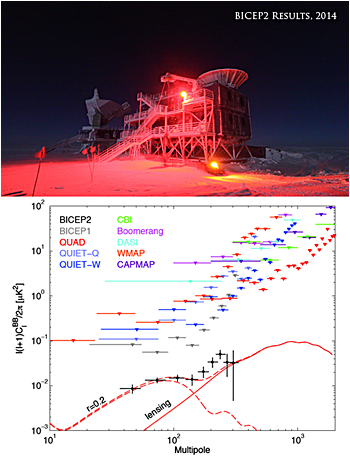
79th Compton Lectures: Elise Jennings, "Cosmic Cartography - Exploring an Expanding Universe" April 5 - June 7, 2014 | 11:00 AM | KPTC 106 April 5, 2014 @ 11 am April 12, 2014 @ 11 am April 19, 2014 @ 11 am April 26, 2014 @ 11 am May 3, 2014 @ 11 am May 10, 2014 @ 11 am May 17, 2014 @ 11 am May 31, 2014 @ 11 am June 7, 2014 @ 11 am The discovery that the expansion of the Universe is being accelerated by a mysterious force that cosmologists call "Dark Energy" has had an immense impact and is the most exciting area of research in Cosmology today. The 2011 Nobel Prize in physics was awarded to three astronomers who found the first direct evidence of this acceleration by observing the brightness of exploding stars in the Universe. These astonishing observations have ignited a race towards an even bigger discovery - what is Dark Energy? Unravelling the nature of Dark Energy is one of the most important problems facing cosmologists and will answer profound questions about fundamental physics in our Universe. In these lectures Dr. Jennings will describe the cutting-edge of current research which tries to make sense of Dark Energy and the accelerating expansion. Uncovering the nature of Dark Energy will require exciting cosmic detective work gathering evidence, formulating theories and testing new ideas in the largest laboratory available to us - the Universe. The lectures require no mathematical or scientific background; just bring your curiosity. Related Links: KICP Members: Elise Jennings Broader Horizons: Kathryn Schaffer, School of the Art Institute of Chicago April 7, 2014 | 11:00 AM | LASR conference room 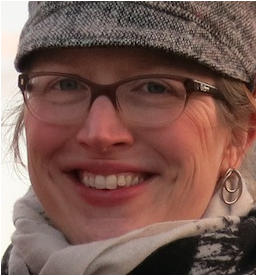 Related Links: KICP Members: Kathryn K. Schaffer Scientific projects: South Pole Telescope (SPT) Kavli Foundation Webcast: Secrets of the Universe's First Light April 18, 2014 | 3:00 PM Website THE FIRST PROOF that the universe underwent an almost unimaginably fast expansion when it was only a trillionth of a trillionth of a trillionth of a second old has taken the world by storm. This sudden growth spurt was first theorized more than three decades ago. Yet only last month did astrophysicists reveal the first hard evidence that universe swelled from microscopic to cosmic size in less than the blink of an eye - an announcement so huge that some say dwarfs even the discovery of the Higgs boson. On April 18, two of the scientists who made this groundbreaking discovery will come together for a conversation with two of the pioneering leaders of the field. Together, they will examine the detection of a distinctive, swirling pattern in the universe's first light, what the swirl tells us about that monumental growth spurt, and the many implications on the way we understand the universe around us. About the Participants JOHN CARLSTROM leads two experiments that study the universe's first light: the South Pole Telescope in Antarctica and the Sunyaev-Zeldovich Array in California. One of the foremost researchers in this field, Dr. Carlstrom is an expert at extracting information from patterns in light from the early universe. He is the Deputy Director of the Kavli Institute for Cosmological Physics. Dr. Carlstrom is also the S. Chandrasekhar Distinguished Service Professor in Astronomy & Astrophysics and Physics at the University of Chicago. WALTER OGBURN is a member of the BICEP2 team that made this important discovery. He also conducts work at The Keck Array, a suite of telescopes at the South Pole that also search for twists in the universe's first light. Dr. Ogburn is a postdoctoral researcher at the Kavli Institute for Particle Astrophysics and Cosmology at Stanford University. MICHAEL TURNER (Moderator) is a theoretical cosmologist who works at the intersection of cosmology and elementary particle physics to understand the origin and evolution of the universe. Renowned for his work on inflationary cosmology, the characteristics of dark energy and the nature of dark matter, Dr. Turner is the Director of the Kavli Institute for Cosmological Physics as well as the Bruce V. and Diana M. Rauner Distinguished Service Professor at the University of Chicago. ABIGAIL VIEREGG is an active member of the BICEP2 team. In addition, she works on The Keck Array and the ANITA experiment, which studies ultra-high energy cosmic neutrinos. A member of the Kavli Institute for Cosmological Physics, Dr. Vieregg is also assistant professor at the University of Chicago. The Kavli Foundation Read more >> Related Links: KICP Members: John E. Carlstrom; Michael S. Turner; Abigail G. Vieregg Scientific projects: BICEP2/The Keck Array/BICEP3; South Pole Telescope (SPT); Sunyaev-Zeldovich Array (SZA) 519th UChicago Convocation: honoring Wendy L. Freedman June 12, 2014 | 4:30 PM | Quad Club Solarium (2nd floor) 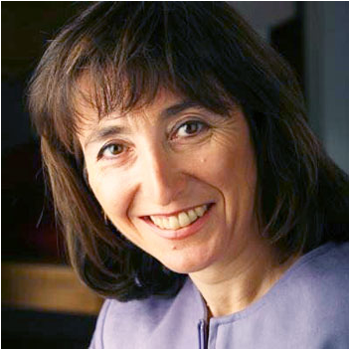 Please join us in honoring Wendy L. Freedman who will be receiving an Honorary of Doctor of Science from the University of Chicago this upcoming 519th Convocation. Wendy L. Freedman, a world leader in astronomy and cosmology, will receive a Doctor of Science honorary degree. Freedman is the Crawford H. Greenewalt Director of the Observatories of the Carnegie Institution of Washington in Pasadena, Calif. Freedman served as scientific leader for a team of 30 astronomers who carried out the Hubble Key Project to measure the current expansion rate of the universe. At the project’s start in the mid-1980s, the age and size of the universe ranged between 10 and 20 billion years. The project’s final results resolved this longstanding debate, determining the age of the universe as 13.7 billion years with an uncertainty of 10 percent. She served as co-leader of the Carnegie Supernova Project to study exploding stars to provide constraints on the nature of dark energy, a mysterious force that appears to be accelerating the expansion of the universe. Currently, Freedman focuses on measuring both the current and past expansion rate of the universe, and on characterizing the nature of dark energy. She is leading a project to use the Spitzer Space Telescope to measure the expansion rate to an accuracy of three percent. Freedman is an elected member of the National Academy of Sciences and of the American Philosophical Society. She also is an elected fellow of the American Academy of Arts and Sciences and of the American Physical Society. Additional honors include the American Physical Society’s Magellanic Prize, as well as the Gruber Cosmology Prize. Angela V. Olinto, Homer J. Livingston Professor and Chair Department of Astronomy & Astrophysics Related Links: KICP Members: Angela V. Olinto Cinema Slapdown Round 53: Gravity September 19, 2014 | 7:00 PM | Film Row Cinema 1104 S. Wabash 8th Floor Chicago, IL 60605 Website Is Gravity a realistic view of the hazards of intergalactic travel, or just a reboot of old movie serials with weightlessness thrown in? Is it an examination of solitude and the human need to connect with others, or a soporific woman's weepie about the pains of unfulfilled motherhood? Gravitas or grasping for meaning? C2ST will join Columbia College Chicago Cinema Art + Science for the first bout in a new season of Cinema Slapdown, as they take on Alfonso Cuarón's Oscar winning excursion to the edge of action movie archetypes. Featuring Cinema Art + Science Associate Professor and Slapdown Superstar Julian ("a spirited glimpse into the eternity of space") Grant versus University of Chicago Cosmologist and Dean of Physical Sciences Edward "Rocky" ("a dispiriting gaze at the edge of clichés") Kolb. Referee'd by Associate Professor and Talk Cinema host Ron Falzone. Read more >> Related Links: KICP Members: Edward W. Kolb Special seminar: BICEP2/B-Mode update September 29, 2014 | 2:00 PM | LASR conference room Six months has passed since the results from the BICEP2 experiment electrified the cosmology and broader scientific community (including the UChicago!). Much has happened since (especially here in Chicago). This brief, first-of-the-year seminar will provide a 30 minute update on where we stand in this exciting adventure. Related Links: Scientific projects: BICEP2/The Keck Array/BICEP3 KICP Welcome Event and Jamboree September 29, 2014 | 2:30 PM | LASR  * 4:00 - 6:00 BBQ (LASR North Lawn) The purpose of the Jamboree is to allow all of KICP members who are currently conducting research to briefly introduce themselves and their work to the entire KICP community. This includes all Senior Members, Senior Researchers, Fellows, and Associate Fellows. Because we have a lot of members and limited time, the jamboree will take the following, tightly controlled, format: * Each Senior Member will receive 90 seconds and be allowed 1 or 2 (no more!) powerpoint slides to briefly introduce themselves and their research. * All Fellows, Associate Fellows, and Senior Researchers will receive 60 seconds and 1 powerpoint slide. * We would also like to request that KICP Graduate Students briefly introduce themselves. 80th Compton Lectures: Tim Linden, "Shining Light on the Dark Side of the Universe" October 4 - December 13, 2014 | 11:00 AM | KPTC 106 October 4, 2014 @ 11 am October 11, 2014 @ 11 am October 18, 2014 @ 11 am October 25, 2014 @ 11 am November 1, 2014 @ 11 am November 8, 2014 @ 11 am November 15, 2014 @ 11 am November 22, 2014 @ 11 am December 13, 2014 @ 11 am Everything you see around you -- the chair you are sitting on, the grass beneath your feet, and the air you breathe, has a common feature. These objects emit and absorb light. This feature enables us to see, hear, touch, taste and smell the world around us. However, astronomers have discovered over the last 40 years that most of the 'stuff" in the universe does not actually interact with light! An astounding 95% of the universe's matter and energy takes an invisible form that cannot be explained by any of the currently known particles. Now, the hunt is on to uncover the nature of these novel substances, aptly named "dark matter" and "dark energy". In these lectures, I will describe the cutting edge research which aims to understand the nature of dark matter and dark energy. This exciting field spans from observatories placed deep under the ice at the South Pole, to particle detectors on board the International Space Station, to simulations running on some of the world's largest supercomputers. Revealing the dark side of the universe will reshape our understanding of both the history and future of the universe, as well as our place within it. Related Links: KICP Members: Tim Linden Broader Horizons: Ali Vanderveld, Data Scientist at Groupon November 18, 2014 | 4:00 PM | LASR conference room 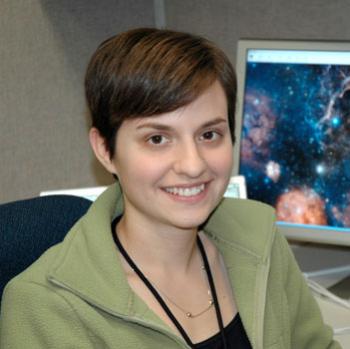 Related Links: KICP Students: Jennifer Helsby |


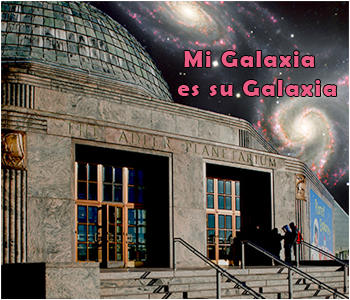
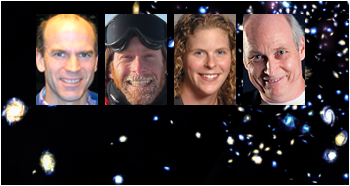
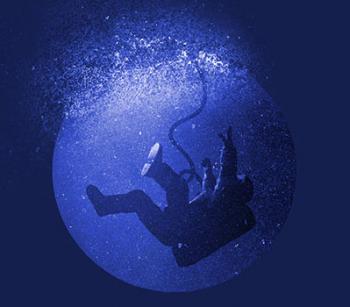



 Overview
Overview